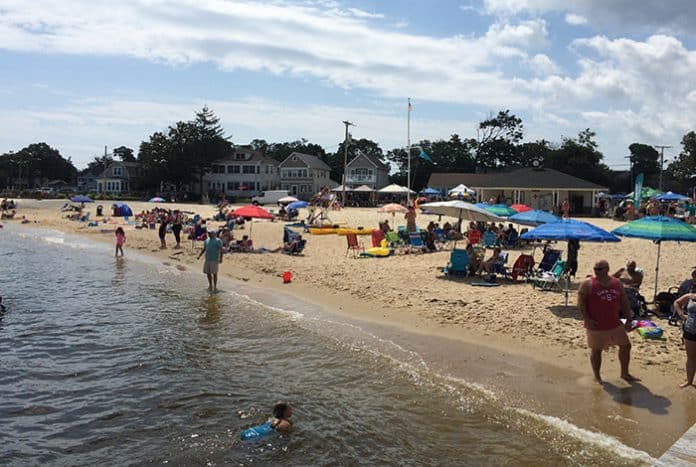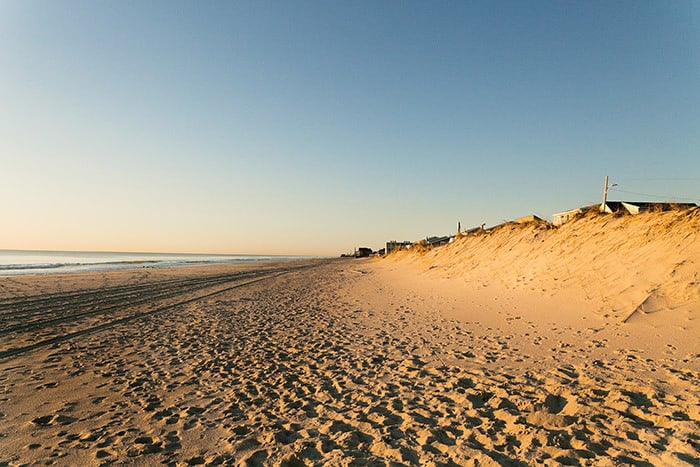
JERSEY SHORE – The State Department of Environmental Protection has created a new web site that will inform bathers of potential closures due to high bacteria counts.
The DEP’s Cooperative Coastal Monitoring Program has created njbeaches.org, an interactive website where people can see the status of their favorite beaches. There’s a map of the state, with little circles where the water is being monitored on the east coast from Monmouth to Cape May counties. The circles are color-coded to denote if the beach is open, closed, or if there’s an advisory. If you zoom in on the map, you can click on the beach and find out what the bacteria count was.
Although the DEP said that there are 180 ocean and 35 bay monitoring stations along the coast, there are also some more inland. There are several along the Toms River, such as in Ocean Gate, Pine Beach, and Beachwood. There’s one on the Brick side of the Metedeconk River. There are two on the Point Pleasant side of the Manasquan River. There’s one at the L Street beach in Belmar, on the Shark River. The rest are on the ocean or bay from Keansburg to Cape May Point.
There is also a field guide of what people might find at the beach, from jellyfish to balls of grease that harden after being poured down drains.
The water is being tested for enterocci, bacteria found in human and animal waste. The bacteria, in and of itself, is not harmful, said Bruce Friedman, director of the DEP’s Division of Water Monitoring and Standards. It appears naturally in our own bodies. He said that the presence of a lot of that bacteria indicates that there’s waste in the water. Where there’s smoke, there’s fire.
The federal standard for this bacteria is 110 colony forming units per 100 ml, Friedman said. However, New Jersey’s tests are a bit more stringent, sending up a yellow flag for 104 units per 100 ml.
Tests are done on Monday, and results are back the next day. If it hits 104 or more, then an advisory is issued for that beach. The little circle on the map turns from green to yellow. The beach can still remain open.
Any beach that has an advisory from Monday gets tested again on Tuesday, Friedman said. This time, though, instead of just testing the one spot, they test 150 feet in three directions out into the water.
If the bacteria count is still more than 104, then the beach is closed. Yellow turns to red. That beach will then be tested every day, going out an additional 150 feet each day. Once the numbers drop below 104, the beach is re-opened.

Generally speaking, bay beaches close more frequently than ocean beaches, he said. Ocean beaches have more tidal flow, which washes out anything harmful.
In addition to water tests, there are flights that are taken over the water every day except Wednesday during the beach season. Observers look for debris, algae, or other signs that mark whether the water is healthy or not. There are also sensors on the plane to detect unhealthy conditions.
There have been fewer advisories issued so far this year than last year, he said.
Stormwater runoff is a major cause of this bacterium. A heavy rainfall will often lead to high bacteria counts. The rain washes waste into the waterways, and then the bacteria flourish. Unfortunately, with the amount of development along the shore, this will always be an issue. Another issue is if there is damage with a municipality’s sewerage infrastructure.
And that leads into why the tests are done on Monday, despite most people going to the beach on the weekend. If a beach gets a green light on Monday, it’s not tested for the rest of the week. A lot could happen in a few days.
But the influx of tourists on the weekend taxes a town’s sewerage system, Friedman said. Leaks would cause bacteria to grow, and that would be detected on a Monday.
The DEP also promoted these tips for safe swimming:
- Swim near a lifeguard.
- Never swim alone.
- If you are caught in a rip current, remember to swim parallel to the shore.
- Avoid sandbars, drop-off areas, or fast currents.
- Be aware of your surroundings.
- Protect yourself from the sun.
The web site does not record dangerous conditions, such as rip tides, that might also close the beach. However, there is a link on rip currents from that site. It also notes that local authorities can also close the beaches at any times at their own discretion.







